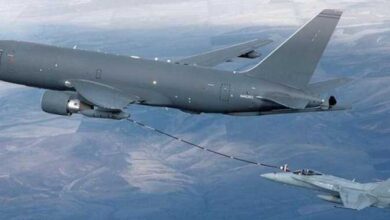
North Korea said on Sunday a submarine-launched ballistic missile test it conducted under the supervision of leader Kim Jong Un had been a "great success" that provided "one more means for powerful nuclear attack".
The launch is the latest in a recent string of North Korean demonstrations of military might that began in January with its fourth nuclear test and included the launch of a long-range rocket the next month.
The tests have increased tension on the Korean peninsula, angered ally China and triggered new U.N. sanctions. Analysts say the tests could be part of a bid by Kim to bolster his position in the run-up to a rare ruling party congress in May.
Concern has been growing that North Korea could soon conduct another nuclear test.
North Korea fired the missile from a submarine off its east coast on Saturday and it flew for about 30 km (18 miles), a South Korean Defence Ministry official said late on Saturday.
South Korea was trying to determine whether the launch may have been a failure, for unspecified reasons, the official said.
The North's official news agency KCNA said the test-firing was "another great success," without disclosing the date and place of the launch, which it said was guided by leader Kim.
"The successful test-fire would help remarkably bolster the underwater operational capability of the KPA navy, he said, adding that it is now capable of hitting the heads of the South Korean puppet forces and the U.S. imperialists any time as it pleases," it said, citing Kim. KPA refers to the North's military.
North Korean state media published a photograph of Kim watching the missile breaching the sea. A second showed the missile flying into the air.
The missile was powered by a solid fuel engine, KCNA said, which if true would mark a significant advance in North Korea's submarine-launched missile technology, and be a "huge leap in ambition", according to Jeffrey Lewis of the California-based Middlebury Institute of International Studies at Monterey.
The U.S. Strategic Command said it had detected and tracked the launch and it did not pose a threat to North America.
U.S. State Department spokesman John Kirby said launches using ballistic missile technology were "a clear violation of multiple UN Security Council resolutions."
North Korea is banned from nuclear tests and activities that use such technology under U.N. sanctions dating to 2006 and most recently adopted in March. But it has pushed ahead with work to miniaturize a nuclear warhead and develop an intercontinental ballistic missile (ICBM).
First Congress in 36 years
France on Saturday called on the European Union to unilaterally adopt additional sanctions against North Korea if the missile launch was confirmed.
North Korea first attempted to launch a submarine-based missile last year.
However, a series of test launches were believed to have failed, and its state media earlier carried footage that appeared to have been edited to fake success, according to experts who have seen the visuals.
North Korea will hold a congress of its ruling Workers' Party in early May for the first time in 36 years, at which Kim is expected to formally declare his country a strong military power and a nuclear state.
North Korea's foreign minister, Ri Su Yong, told the Associated Press in New York on Saturday that his country was ready to halt nuclear tests if the United States suspended military exercises with South Korea.
North Korea made that demand in January after its nuclear test.
Satellite images show North Korea may have resumed tunnel excavation at its main nuclear test site, similar to activity seen before the January test, a U.S. North Korea monitoring website reported last week.
South Korea and the United States, as well as experts, believe the North is working to develop a submarine-launched ballistic missile system and an ICBM putting the mainland United States within range.



